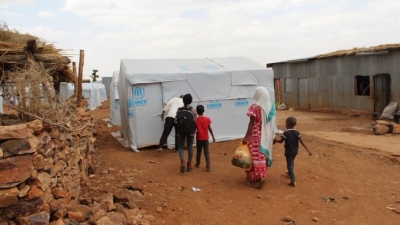1st humanitarian flight enters Ethiopia's Tigray
By IANS | Published: July 23, 2021 11:54 AM2021-07-23T11:54:38+5:302021-07-23T12:05:09+5:30
United Nations, July 23 The first humanitarian flight entered Ethiopia's Tigray region after two months carried more than ...

1st humanitarian flight enters Ethiopia's Tigray
United Nations, July 23 The first humanitarian flight entered Ethiopia's Tigray region after two months carried more than 30 aid workers as fighting had blocked a relief convoy into the conflict-ridden region, a UN spokeswoman said.
"This was the first passenger flight into the Tigray region since commercial flights were halted on June 24," Xinhua news agency quoted Florencia Soto Nino-Martinez, an associate spokeswoman for UN Secretary-General Antonio Guterres, as saying on Thursday.
"The plane carried more than 30 employees from multiple humanitarian organisations, working to deliver urgently needed assistance to communities across Tigray."
She told Xinhua that Thursday's Humanitarian Air Service (UNHAS) flight originated at the Bole International Airport in Addis Ababa and landed in Mekele, the regional capital of Tigray.
The flights will operate twice a week, carrying humanitarian personnel into and out of Tigray.
The spokeswoman said the humanitarian response continues to be challenged by a lack of humanitarian supplies, limited communication services, no commercial supply chain and security concerns.
Published reports said Tigray rebels have clashed with federal government troops and militias from other regions recently, including in the Afar region immediately to the east, holding up road traffic.
"A World Food Programme-led convoy of over 200 trucks containing food and other essential humanitarian supplies is currently on standby in Semera (in Afar region) and is expected to depart for Tigray as soon as security clearances are assured," the spokeswoman said.
The UNHAS flights are managed by the World Food Programme.
Disclaimer: This post has been auto-published from an agency feed without any modifications to the text and has not been reviewed by an editor
Open in app